When planning or upgrading a bathroom, most homeowners think first about appearance, flushing performance, and price. Yet one factor that often gets overlooked is the weight of the toilet. At first glance, it might seem like a small detail, but the reality is that weight plays a big role in installation, usability, and durability.
A toilet isn’t just another fixture—it’s a long-term investment that needs to be practical as well as comfortable. Knowing how heavy it is gives you a clear idea of what to expect when moving it, installing it, or even repairing it later on.
There are several reasons why toilet weight matters:
-
Installation Requirements
Heavier toilets, such as one-piece or smart toilets, can weigh over 100 pounds. Lifting and positioning them correctly often requires two people or a professional plumber. If installed improperly due to the difficulty of handling, leaks or cracks can occur. -
Durability and Stability
Generally, heavier toilets are built from sturdier materials like ceramic, porcelain, or vitreous china. They not only last longer but also feel more stable when in use compared to very lightweight options. -
Floor and Space Considerations
Installing a heavy toilet on an upper floor or in a small bathroom may raise concerns about structural support and available space. Understanding the load helps ensure safety and compatibility with your bathroom’s design. -
Portability and Convenience
If you need a toilet that can be moved—such as for RV use, outdoor events, or temporary setups—lighter materials like plastic or stainless steel become more practical. -
Maintenance and Repairs
At some point, every toilet needs servicing, whether it’s replacing a wax ring, fixing a leak, or swapping out a tank. A lighter toilet makes this process much easier, while a heavier one can complicate the job.
In short, knowing the answer to “How much do different types of toilets weigh?” ensures you choose a toilet that fits your lifestyle, bathroom design, and long-term maintenance needs.
| Toilet Types | Weight in pounds | Weight in KG |
| One-piece toilet: | 80 to 120 pounds | 36.2-54.4 KG |
| Two-piece toilet: |
|
|
| Smart toilet: | 100 to 120 pounds | 45-55 KG |
| Wall-hanging toilet: | 40 to 80 pounds | 18-36 KG |
| Portable toilet: | 70 pounds | 31 KG |
| Ceramic toilet: | 100-140 pounds | 45-63 KG |
| Vitreous China toilet: | 80-90 pounds | 36-40 KG |
| Porcelain toilet: | 90-110 pounds | 40-50 KG |
How much do different types of toilets weigh?
Toilets come in many designs, and each type has its own weight range. The choice you make often depends on your bathroom space, style preference, and budget. But before installation, you need to know how much these toilets weigh so you can plan accordingly. Let’s break down the most common types and their average weights.
One-Piece Toilet Weight
The one-piece toilet combines the bowl and tank into a single unit. Its seamless design is modern and easy to clean, but the tradeoff is weight. Because the parts are molded together, this type is heavier than others.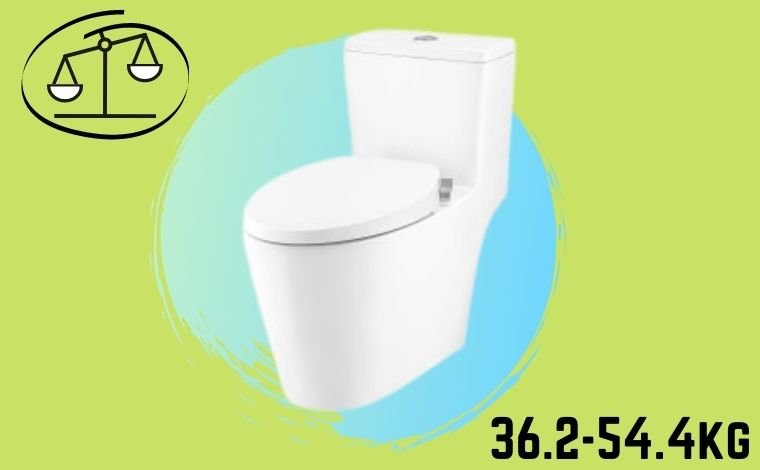
-
Average weight: 80–120 pounds (36–54 kg).
Moving and installing a one-piece toilet typically requires two people. If you’re thinking about a DIY installation, it’s wise to get assistance to avoid damage or injury.
Two-Piece Toilet Weight
The two-piece toilet is the most common design worldwide. Here, the tank and bowl are manufactured separately and then joined during installation. This makes transport and setup easier compared to a one-piece unit.
-
Bowl weight: 50–60 pounds (22–27 kg).
-
Tank weight: 25–40 pounds (11–18 kg).
-
Combined weight: 75–100 pounds (34–45 kg).
Since the weight is split, one person can usually handle installation, though professional help ensures a perfect fit.
Smart Toilet Weight
A smart toilet is equipped with advanced features like heated seats, automatic flushing, bidet functions, and even night lights. These extras add to both cost and weight.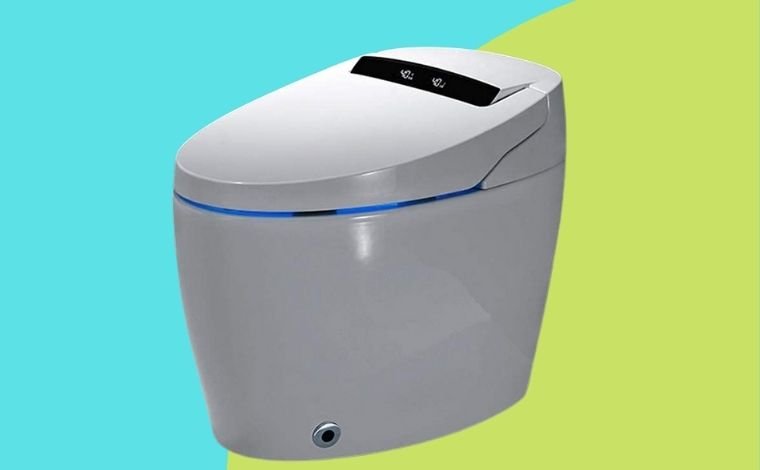
-
Average weight: 100–120 pounds (45–55 kg).
The electronics and complex design make smart toilets heavier than standard models. Installation usually requires professional expertise, especially for wiring and plumbing integration.
Wall-Hung Toilet Weight
A wall-hung toilet saves floor space and creates a sleek, modern look. Unlike floor-mounted models, the bowl hangs from the wall while the tank is hidden behind it.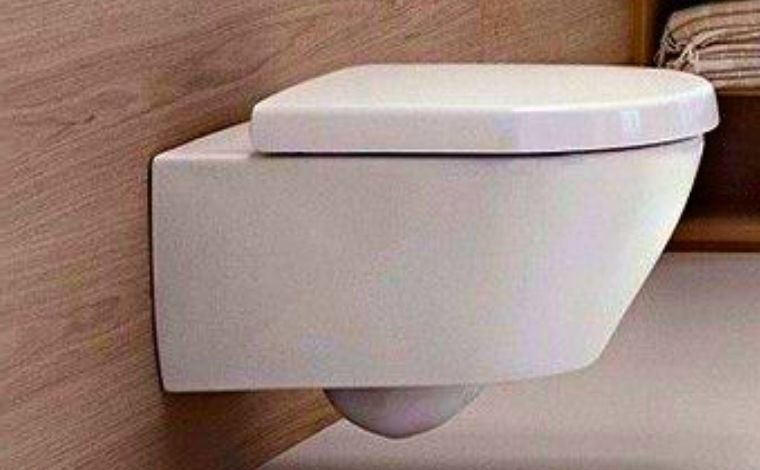
-
Average bowl weight: 40–80 pounds (18–36 kg).
Although the bowl seems lighter, the concealed in-wall tank and steel frame add substantial hidden weight. Proper installation is critical for stability, and this type is not recommended as a DIY project.
Portable Toilet Weight
For camping, outdoor events, or mobile living, the portable toilet is the go-to option. These are compact, lightweight, and designed for easy transport.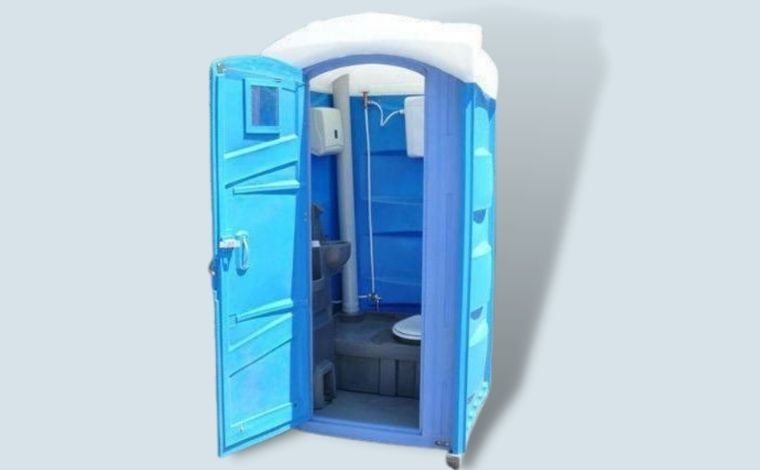
- Average weight: around 70 pounds (31 kg).
- Lightweight plastic versions: only 10–15 pounds (4–7 kg).
These are simple to use and highly portable, making them a favorite among travelers.
How much do different types of toilets weigh?
While design and structure influence weight, the material used to build a toilet is one of the biggest deciding factors. From traditional ceramic to lightweight plastic, each material carries its own durability, maintenance requirements, and weight range. Let’s explore how much different types of toilets weigh depending on what they’re made of.
Ceramic Toilets
Ceramic is the most widely used toilet material. It is durable, resistant to water damage, and relatively affordable. Because of its density, ceramic toilets are heavier than alternatives.
-
Average weight: 100–140 pounds (45–63 kg).
If you want a long-lasting and stable option, ceramic toilets are excellent. However, due to their heavy nature, they usually require two people for installation.
Vitreous China Toilets
A popular variation of ceramic, vitreous china toilets have an enamel coating that makes them shinier and easier to clean. They are slightly lighter than standard ceramic toilets but still robust.
-
Average weight: 80–90 pounds (36–40 kg).
This balance of durability and manageable weight makes vitreous china a preferred material in many homes.
Porcelain Toilets
Porcelain is another ceramic form, known for being sleek and polished. These toilets strike a balance between heavy-duty durability and stylish appearance.
-
Average weight: 90–110 pounds (40–50 kg).
Porcelain toilets are standard in most modern homes and are considered a middle-ground option in terms of weight.
Stainless Steel Toilets
Strong, vandal-resistant, and easy to sanitize, stainless steel toilets are commonly found in prisons, airplanes, and public facilities. Despite their durability, they are surprisingly lighter than ceramic models.
-
Average weight: Up to 40 pounds (18 kg).
Their light weight and durability make them practical for commercial and institutional use, though they are less common in private homes.
Plastic Toilets
For travel, camping, and RVs, plastic toilets are the lightest option. They are compact, affordable, and easy to move.
-
Average weight: 10–15 pounds (4–7 kg).
While not as durable as ceramic or porcelain, their extreme portability makes them perfect for temporary setups.
How much do different types of toilets weigh? (By Size & Dimensions)
Aside from type and material, the size and dimensions of a toilet also have a direct impact on its weight. Bigger bowls, deeper tanks, and taller seat designs naturally add extra pounds. Let’s look at how toilet size influences weight.
Compact Toilets
Compact toilets are designed for smaller bathrooms, apartments, or powder rooms. They feature smaller bowls and reduced tank capacity.
-
Average weight: 50–70 pounds (22–32 kg).
Their smaller footprint makes them easier to install and move compared to full-sized models.
Standard Toilets
Standard-sized toilets are the most common choice for households. With regular bowl dimensions and average tank capacity, they offer a balance between comfort and manageability.
-
Average weight: 80–100 pounds (36–45 kg).
This weight range is typical for most one-piece and two-piece ceramic toilets.
Comfort Height Toilets
Also known as chair-height toilets, these are designed to be slightly taller (usually 17–19 inches from floor to seat) for better accessibility, especially for seniors and those with mobility issues.
-
Extra weight added: around 10–15 pounds (4–7 kg).
Because of the extra ceramic used in the taller bowl, these toilets are heavier than standard ones.
Large Tank Toilets
The tank plays a big role in total weight. One gallon of water weighs 8.33 pounds. If a tank holds 3 gallons, that’s nearly 25 pounds added when it’s full.
-
Example: An empty tank might weigh 30 pounds, but once filled with water, the load jumps to 55 pounds.
Modern low-flow toilets reduce this effect since they typically hold less water, making them lighter compared to older, high-capacity tanks.
Rough-In Depth Considerations
The rough-in size (the distance from the wall to the center of the drain) can also impact toilet weight.
- 10-inch rough-in toilets: lighter, with a weight closer to compact models.
- 12-inch rough-in toilets: the standard size, falling in the mid-range.
- 14–16 inch rough-in toilets: larger, adding 6–20 pounds more than a standard version.
Updated Information on Modern Toilet Weights
Over the last decade, toilet design has evolved rapidly. Manufacturers now focus not only on comfort and appearance but also on efficiency, sustainability, and easier installation. These innovations have slightly changed the way toilet weights are distributed. If you’re shopping for a new model, it’s important to know how modern toilets compare to traditional ones in terms of weight.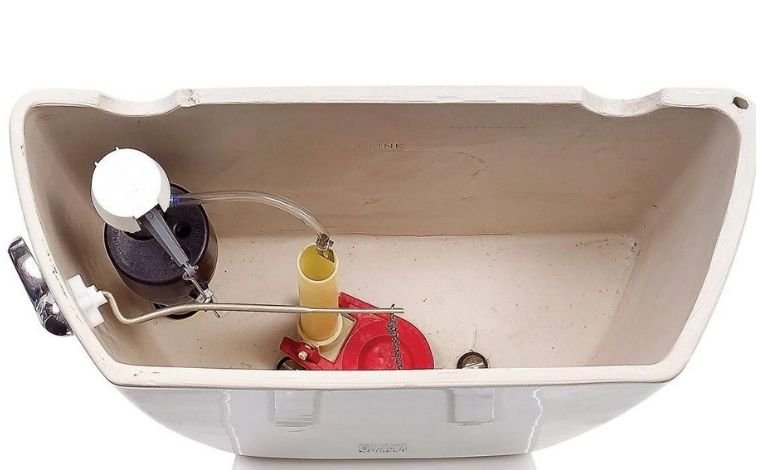
Eco-Friendly Toilets
Today’s eco-friendly toilets are designed to use less material while still maintaining strength. Some models are built with thinner but reinforced ceramic walls, reducing the total weight by 10–20% compared to older units. This makes them easier to install without sacrificing durability.
Tankless Smart Toilets
One of the biggest modern shifts is the tankless smart toilet. Instead of storing water in a bulky tank, these toilets connect directly to the water line and use advanced flushing technology.
-
Weight impact: They may appear lighter since the tank is gone, but the electronics and built-in bidet features add back some weight. Most tankless smart toilets weigh around 90–110 pounds (40–50 kg).
ADA-Compliant Toilets
Accessibility is another key trend. ADA-compliant toilets, which are taller and reinforced to support heavier loads, are increasingly common in both homes and public buildings.
-
Weight effect: They usually add 5–15 pounds compared to standard models because of extra ceramic and stronger seat construction.
Dual-Flush Toilets
Dual-flush systems, which allow users to choose between a light flush and a full flush, are now common in households aiming to save water. The mechanism adds some complexity to the tank, making it slightly heavier than a single-flush toilet. However, the difference is usually only 3–5 pounds.
Lightweight Composite Materials
Some companies are experimenting with lightweight composite materials that reduce weight while maintaining durability. These modern designs are especially helpful for multi-story apartments or remodels where weight management is crucial.
Final Thoughts – Choosing the Right Toilet Weight for Your Home
After exploring the many variations in design, material, and size, we can see that the answer to “How much do different types of toilets weigh?” is not a one-size-fits-all number. Toilet weight ranges widely depending on whether it’s a compact plastic portable toilet or a full-sized ceramic one-piece smart toilet.
Key Takeaways
- One-piece toilets: Heavy (80–120 lbs), durable, and sleek but require more effort to install.
- Two-piece toilets: Moderate (75–100 lbs combined), easier to handle, and widely available.
- Smart toilets: Around 100–120 lbs, packed with features but more complex to set up.
- Wall-hung toilets: 40–80 lbs for the bowl, though hidden frames add unseen weight.
- Portable toilets: Extremely light (10–70 lbs), ideal for outdoor or mobile use.
- Ceramic and porcelain models: Heavy but long-lasting.
- Stainless steel and plastic models: Lighter, practical for specialized settings.
How to Decide
When choosing a toilet for your home or project, think about more than just looks and cost. Consider:
- Who will install it? A lightweight model may save on installation costs if you plan to DIY.
- Where will it be placed? Upper floors or compact bathrooms may benefit from lighter models.
- Who will use it? Comfort height or ADA-compliant toilets are slightly heavier but more user-friendly for seniors and people with mobility challenges.
- Do you need portability? If yes, a lightweight portable or plastic toilet is the most practical choice.
Final Word
A toilet is one of the most essential fixtures in any home, and understanding its weight is more than a technical detail—it affects installation, durability, maintenance, and convenience. Whether you choose a lightweight portable option for travel or a sturdy porcelain unit for your main bathroom, weight is an important factor that should guide your decision.
So, the next time you’re shopping for a new fixture, don’t just ask, “Does this toilet look good in my bathroom?” Instead, remember to also ask: “How much do different types of toilets weigh?” That question could save you time, money, and effort in the long run.
Hi, this is Robert Crossan, the owner of this website, has 17 years of experience in the installation, maintenance, and repair of toilets and plumbing systems. After completing the Level 2 Basic Plumbing course in 2005, I started working in both domestic and commercial buildings as a professional plumber. So I can figure out the core difference between different toilet models and brands. It also helped me monitor their work performance and setbacks.